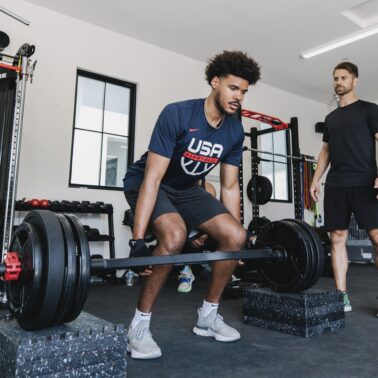“continuum: a continuous sequence in which adjacent elements are not perceptibly different from each other, although the extremes are quite distinct”
Google
What You Will Learn
- Training does not equal rehab.
- The 5 phases of the Continuum of Return to Play and how each phase requires a specialist.
- Specific goals for each phase of the Continuum and how they can make you a more effective coach or physical therapist.
Training does not equal rehab. Training is a component of rehab. Therefore, let’s establish a few working definitions for each aspect of the Continuum of Return to Play. We’ll also utilize the analogy of a returning a car to a racetrack after a car crash.
health: Restore Homeostasis
Put out the fires
The Continuum of Sports Rehab starts the moment an injury occurs is like a car crash. There is chaos, damage, and often an urgency to know how severe the injury is. The first thing to do in any injury is to put out the fires and run the diagnostic report to determine what the damage is. This involves clinical assessments, several conversations with practitioners, and potential imaging.
After the information is collected and communicated to the key stakeholders (coaches, player, agents, front office, performance), the first step is to restore the injured body part to homeostasis. Clinically this will involve reducing pain, reducing any swelling, and if necessary, protect the compromised tissues. If swelling and pain persist, homeostasis cannot be achieved and ultimately these will impede our ability to progress rehab.
Therapy: Part Task Learning Strategies
Fix the Broken Part
Every car crash requires fixing broken parts. Every injury requires a similar idea in that local parts of the injury are going to require specific interventions. Surgery is the most direct, literal method for fixing a broken part, but majority of injuries do not require surgery.
We cannot ignore local rehab, which is why training does not equal rehab. In the context of motor learning and rehab, I refer to the Therapy phase as part task learning strategies. Therapy, often physical therapy, requires specific interventions that address biology, psychology, and social aspects involved in a sports injury. The biopsychosocial model requires specialized, individual care to progressively load the injury to a level that is safe to integrate into whole task learning strategies, a.k.a. Training.
A brief example is ACL surgery. We absolutely, unequivocally need isolated open-chain quadriceps strengthening because the “part” – the quad – is necessary to restore normal knee function. If we skip the step of part-task Therapy, then the body will compensate during whole task Training and ultimately create an undesirable adaption secondary to a weak knee.
Training: Whole Task Learning Strategies
Take the Car for a test drive
As we slide along the Continuum of Sports Rehab from Health to Therapy, the next phase is Training where I prefer to use whole task strategies that incorporate the local injury. In a car crash we may have a broken axel that we need to repair the axel. Then take the car through basic maneuvers to assure the part is effectively being integrated.
Sticking with our ACL injury, the Training component of rehab focuses on incorporating the knee in a variety of vectors to challenge the integration of the knee with the body. I primarily focus on breaking actions down into vertical, linear, and lateral vectors during the Training phase of rehab. Specific examples are squatting (vertical), sled pushing/pulling (linear), and sled dragging (lateral).
Performance: Maximize Capabilities
Drive the car on a closed track timed trial
Performance is exactly what the name implies – perform. The goal of this phase is to implement the scientific method to assess individual variables by pushing them to their maximal capabilities. The scientific method involves isolating out a singular performance variable such as max running velocity or countermovement jump height. I prefer to assess this variable in isolation to determine if this component of performance is adequate to be integrated into the chaos of sport. If it is, great we move onto the next. If it is not, then we now know where to take our training.
I acknowledge that sport does not operate in a world of isolated performance variables. The goal of the Performance phase is to do systems check. An analogous scenario is a timed trial a Formula 1 driver does before a race. The timed trial can tease out certain areas of the performance that need improvements before full integration into the race – the sport.
Sport: Organized Chaos
Race the car at the monaco grand prix
Team sports are nothing more than organized chaos. We create an environment where complex systems (humans) operate inside a chaotic environment with boundaries (playing field/court).
This final phase of the rehab Continuum is to gradually expose the player to the demands of sport. A very general progression into sport may look like this:
- Non-contact skill work
- Non-contact movement in small spaces
- Non-contact movement in big spaces
- Contact movement in small spaces
- Contact movement large spaces
We can manipulate variables of sports similar to how we manipulate sets, reps, and weight to achieve certain physiological adaptions. Smaller spaces encourage neuromuscular adaptations with exposures to accelerations & decelerations. Larger spaces encourage aerobic adaptations with exposures to high velocities.
In summary, The Continuum of Return to Play is a sliding scale that an athlete moves along throughout the Return to Play process. It is a model to delegate who and when is managing certain phases of rehab based on skills and expertise.



